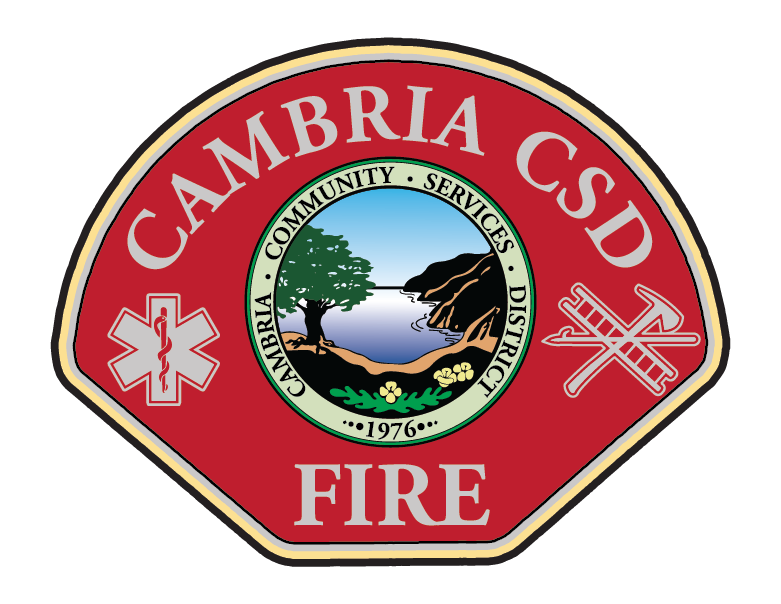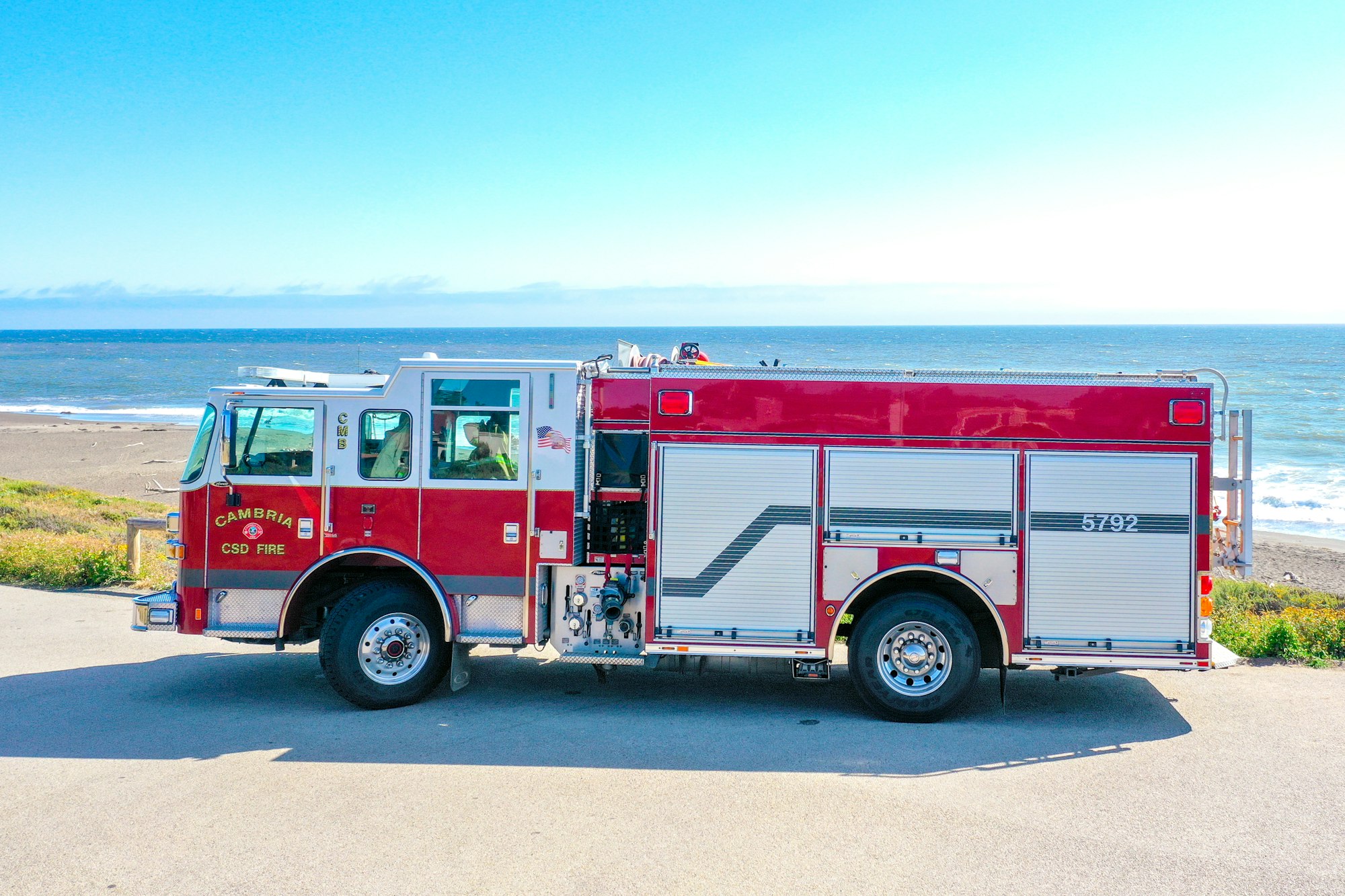Cambria Fire Department Acquires Type 5 Wildland Skeeter Brush Truck

On July 15, 2025, the Cambria Fire Department took delivery of a new Type 5 Wildland Skeeter Brush truck. This vital addition to the department’s fire apparatus fleet significantly strengthens its ability to respond to wildfires in and around Cambria—an urgent need identified and recommended for purchase in February 2023.

Cambria Fire Department’s two existing engines—Engine 5792 (a 2017 Pierce Dash Type 1, 1500 GPM) and Engine 5791 (a 2007 Pierce Dash Type 1, 1500 GPM)—are purpose-built for commercial and residential structure fires. However, these Type 1 engines are not off-road capable and are not designed to operate in the rugged, brush-filled terrain that surrounds much of Cambria. With the community located in a heavily forested region and the CCSD owning significant open space, the absence of a wildland fire apparatus represented a serious vulnerability in the district’s emergency response capabilities.
Recognizing this, the CCSD Board of Directors prioritized the acquisition of a wildland-capable apparatus in the fiscal year 2022/2023 budget. Following a thorough evaluation of options, the department selected the Wildland Skeeter Brush Truck—a high-performance, off-road capable Type 5 apparatus that exceeds national standards. While the national minimum standards for a Type 5 wildland engine include a 400-gallon water tank, a pump capacity of 50 GPM, and 100 PSI, the custom-built Cambria Skeeter surpasses these with a 400-gallon tank, 300 GPM pump capacity, and 170 PSI, ensuring superior fire suppression capabilities in remote terrain.
What’s the Difference Between a Type 1 Engine and a Type 5 Wildland Skeeter Brush Truck?
- Type 1 Engine: Type 1 engines are designed for structural firefighting in developed areas. They are large, heavy-duty vehicles equipped with advanced pumping systems (typically 1,000–1,500 GPM), 500 gallons of water, and a full complement of ladders, hoses, and rescue tools. These engines are crewed by a team of four or more firefighters and are best suited for urban and suburban environments. Due to their size and design, Type 1 engines are not capable of off-road or wildland operation.

- Type 5 Wildland Skeeter Brush Truck: Type 5 engines, such as Cambria’s new Wildland Skeeter Brush Truck, are purpose-built for wildland and wildland-urban interface (WUI) firefighting. These smaller, lighter, and highly maneuverable vehicles are designed to navigate narrow roads, trails, and rugged terrain that larger engines cannot access. Type 5 engines typically carry 400 gallons of water and are equipped with a pump capable of delivering at least 50 gallons per minute (GPM). Their compact design makes them more cost-effective and allows them to operate with a smaller crew, offering greater flexibility and efficiency during wildfire response operations.



















The addition of the new Wildland Skeeter Brush Truck is a strategic and essential investment in public safety. It marks a significant advancement in the Cambria Fire Department’s mission to protect life, property, and the environment. As wildfire seasons grow more intense, this specialized apparatus ensures our community is better prepared to respond swiftly and effectively to fire emergencies throughout Cambria’s unique coastal forest landscape.
As part of our commitment to long-term planning and operational readiness, CCSD staff have already initiated the process of acquiring the department’s next fire engine. The formal procurement process will begin this fall, with staff aiming to present a purchase recommendation to the Board of Directors for consideration and approval. The new engine will replace Cambria’s current first-out Engine 5792, which will then be moved to second-out status. At that time, Engine 5791 will be surplused and sold, as it will have reached the end of its service life. Given current lead times, delivery of a new engine typically takes one to three years, making early planning essential to ensure the continued reliability of our emergency response capabilities.
